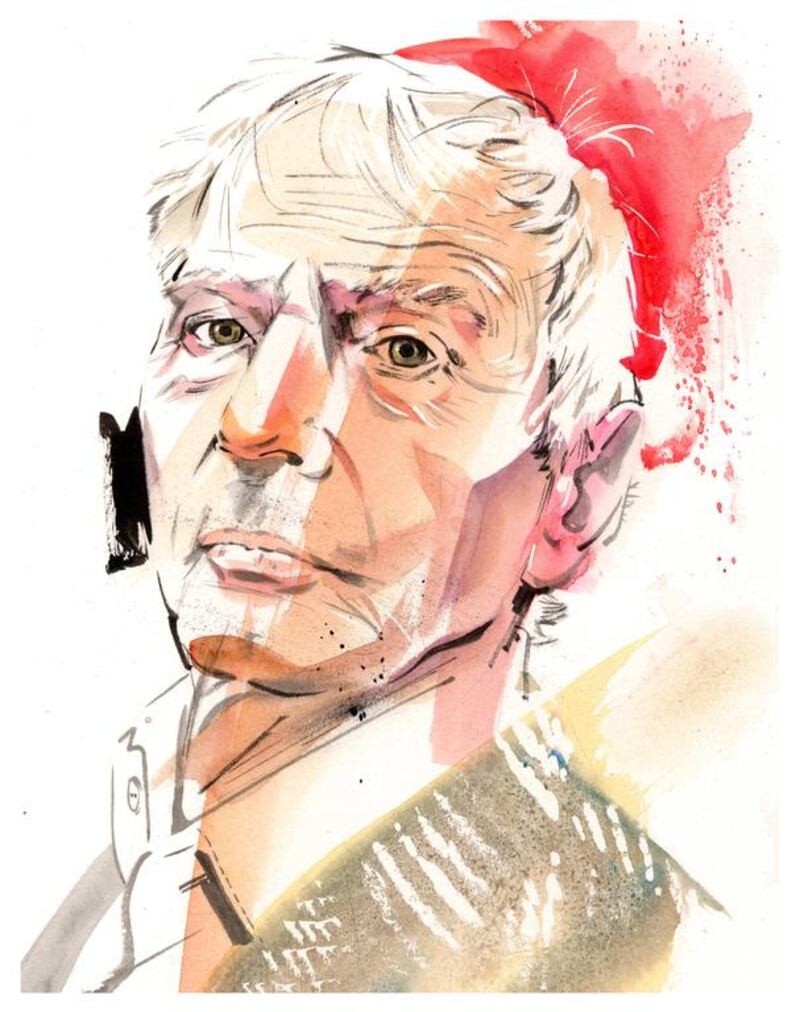Life has taken an unwelcome turn for Robert Durst, the 71-year-old heir to one of New York City’s grandest property empires.
Remarks he made in an unguarded moment, but that were captured on tape, have fuelled media speculation about his innermost thoughts – and therefore, perhaps, the truth – concerning not one, not even two, but three suspicious deaths.
The circumstances of the heavy downfall now threatening Durst seem too far-fetched for any whodunnit author aiming for plausibility. Excusing himself for a visit to the bathroom after giving a television interview in which he rejected new evidence linking him to the 2000 murder of a close friend, Susan Berman, Durst overlooked one detail. He was still wearing a microphone.
And in that corner of supposed privacy, gazing at the bathroom mirror, if one report is to be believed, he muttered words that would quickly return to haunt him: “There it is. You’re caught ... What the hell did I do? Killed them all, of course.”
There was more rambling, barely coherent in parts, but those few words, amounting to something close to a confession, have provoked the level of feverish coverage guaranteed in the United States by a combination of unsolved murders and an odd but super-rich suspect.
Yet potentially incriminating as they are, the words did not necessarily provide the spur for his arrest. By the time the documentary – made by HBO and entitled The Jinx: The Life and Deaths of Robert Durst – was broadcast last Sunday, Durst was already in police custody. He had been detained the previous night in a New Orleans hotel, where he had checked in using an alias. Police had issued a warrant after becoming satisfied they had relevant new evidence pointing to his culpability in the Berman killing.
On the basis of what the filmmaker Andrew Jarecki has told the US media, the interview with Durst was the last of two and may have been made as long ago as 2012 or 2013. Jarecki has said the authorities were made aware of the whispered remarks “months ago”.
However, the Los Angeles Police Department has denied acting as a result of anything in the documentary, stating: “As a result of investigative leads and additional evidence that has come to light in the past year, investigators have identified Robert Durst as the person responsible for Ms Berman’s death.” In other words, after much criticism for earlier failures, the police claim to have information of their own.
What is clear is that the bathroom recording could be an important piece of evidence, if ruled admissible. Durst has agreed to be returned to Los Angeles and is expected to stand trial there for first-degree murder, for which he could be executed by lethal injection if convicted.
His lawyer, Chip Lewis, says Durst continues to deny murder. He has also sought to minimise the impact of the recording. “You’ve said things under your breath that you probably didn’t mean,” Lewis told the US Fox News network, adding he was “underwhelmed” by the significance of what his client had actually said. This prompted Jeanine Pirro, a former district attorney who also appears in the documentary, to say: “Chip, the guy admitted on television he killed three people.”
The dramatic developments could also trigger reinvestigation of another unsolved crime: the disappearance and presumed murder of Durst’s first wife, Kathleen, in 1982. Durst, whose family controls 11 Manhattan skyscrapers, has never been charged in connection with her fate. But family and friends have said they are convinced he murdered her.
When Berman was shot dead 18 years later, it led to rumours that she may have known more about what happened to Durst’s wife than he found comfortable.
Amid suspicion about his possible involvement, and conscious of renewed interest in the circumstances of his wife’s disappearance, Durst moved to Texas, bizarrely posing as a mute woman and renting a home in Galveston.
There, he killed a neighbour, Morris Black, and dismembered his body using saws, an axe and a paring knife before fleeing north to Pennsylvania, where he was arrested after stealing a sandwich from a supermarket. Tried for murder, he was cleared after claiming to have acted in self-defence after Black threatened him with a pistol that went off during an ensuing struggle.
Durst was jailed for jumping bail and tampering with evidence after Black’s killing. But his five-year sentence was reduced to take account of time served and he was freed on parole in 2005, only to be recalled to prison for four months after breaching the terms of his release.
The six-part HBO documentary examined circumstantial evidence against Durst in relation to the murder of Berman, also covering Kathleen Durst’s disappearance and the killing of Black.
Robert Alan Durst was born in 1943, one of four children of a New York real-estate developer and philanthropist, Seymour Durst. His brother, Douglas, assumed the presidency of the Durst property empire when their father retired; two other siblings, Thomas and Wendy, are writers and philanthropists.
There was fierce boyhood rivalry between Robert and Douglas and the antagonism deepened when the latter succeeded their father as head of the Durst Organisation. Robert finally accepted a one-off settlement of US$65 million (Dh238.7m) in 2006, ending all interest in the family fortune, but has continued to buy and sell property.
Robert Durst married Kathleen McCormack, a dental hygienist, in 1973 and they ran a food store together in Vermont. Its name, All Good Things, was later used for a film inspired by the extraordinary occurrences in Durst’s life and also directed by Jarecki.
Durst later returned to New York at his father’s request to work in the family business. His marriage to Kathleen was turbulent and the couple were living apart at the time of her disappearance. She was eventually declared legally dead and Durst married his second wife, Debrah, also a formidable figure in New York property, in 2000.
Durst and Berman, a writer whose father had been a Las Vegas mobster, were friends. She was found shot dead at her home on Christmas Eve, 2000. As when Kathleen disappeared, Durst was questioned but there was no evidence to justify a charge.
The documentary's name, The Jinx, reflects Durst's own reasoning for why he never fathered a child. Some pundits are now asking why he jinxed, or compromised, himself by agreeing to meet a filmmaker and answer his hostile questions.
There have been suggestions of mental instability. Durst's brother Douglas rarely speaks publicly about their relationship but was quoted by The New York Times in January as saying: "There's no doubt in my mind that if he had the opportunity to kill me, he would."
Douglas recalled a meeting in 2001 with his brother, then in hiding to avoid further questioning about his wife’s disappearance and Berman’s murder. Both attended a nephew’s wedding in Houston and travelled on the same shuttle bus taking guests to the reception. “I was sitting in the bus and he walked on and sat almost directly behind me,” Douglas said. “He was obviously very disturbed. I was just hoping to be able to walk off the bus.”
Douglas bitterly resented the making of the documentary, and apparently wrote to Jarecki saying it relied on “Robert’s self-serving, revisionist, and fictitious account of the past”. He disputed, in particular, his brother’s account of their mother Bernice’s death in 1950, in which he claimed to have been taken by their father to watch from a window as she prepared to jump from the roof. The family later accepted she had committed suicide but Douglas is adamant all four siblings were “awoken and whisked out of our house to our neighbours for the duration of the tragedy”.
Men of wealth or power, sometimes both, have been known to escape the sternest rigours of US criminal law. The question on many lips now is whether Durst has finally run out of luck, exposed – to quote his brother – as “a sick and dangerous man [who] attempts to rewrite history and blame others for his misdeeds”.
theweekend@thenational.ae






